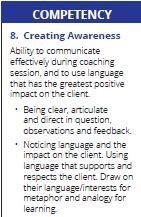A coaching client was at risk to lose their job. Their work history was excellent; due to recent personal problems their focus at work was off track and performance was declining.
Does this sound familiar? Sometimes a coach is hired by the company to work with the client. Sometimes the client is open to the coaching process; other times they resist the coaching process.
In this case, the client resisted coaching because they felt it was a personal attack. After all, could the company not understand they had gone above and beyond for years and now they just needed a little space to get through some things at home?
The coach is now faced with meeting the client’s needs and balancing the sponsor’s expectations around a directive approach and disclosure.
Barrier #1: Sponsor Expectations
The sponsor is interested in this coach directing the client to leave home at home and meet minimum performance requirements. The sponsor wants the coach to report on what is discussed during coaching sessions.
The coach has a conversation with the sponsor. Together they look at the pros and cons of directing change versus individual exploration and choice to change. The sponsor accepts that coaching for exploration and choice is appropriate. Then the sponsor and the coach discuss the boundaries around confidentiality. The coach shares their code of ethics and provides the option of working with the client to develop a report for the sponsor.
Barrier #2: Client Resistance
The client does not feel comfortable talking with the coach because they fear that too much personal information that has nothing to do with work will be given to their employer. The client does not understand how coaching is going to make a difference.
The coach has a conversation with the client. Together they review the coach’s code of ethics and discuss confidentiality. The coach, with permission, shares the agreement with the sponsor that the client is involved in creating reports to the sponsor. The coach asks the client what their understanding of the coaching process is now and together they discuss pros and cons. The coach asks the client what they do want from their company and from coaching. Together they create an approach that the client is comfortable with and move forward scheduling coaching sessions.
How do you think the coach handled this situation?

